Dell XPS Desktop 8950 PC review: power without moving
The Dell XPS 8950 is a powerful desktop PC and has both room and power to spare

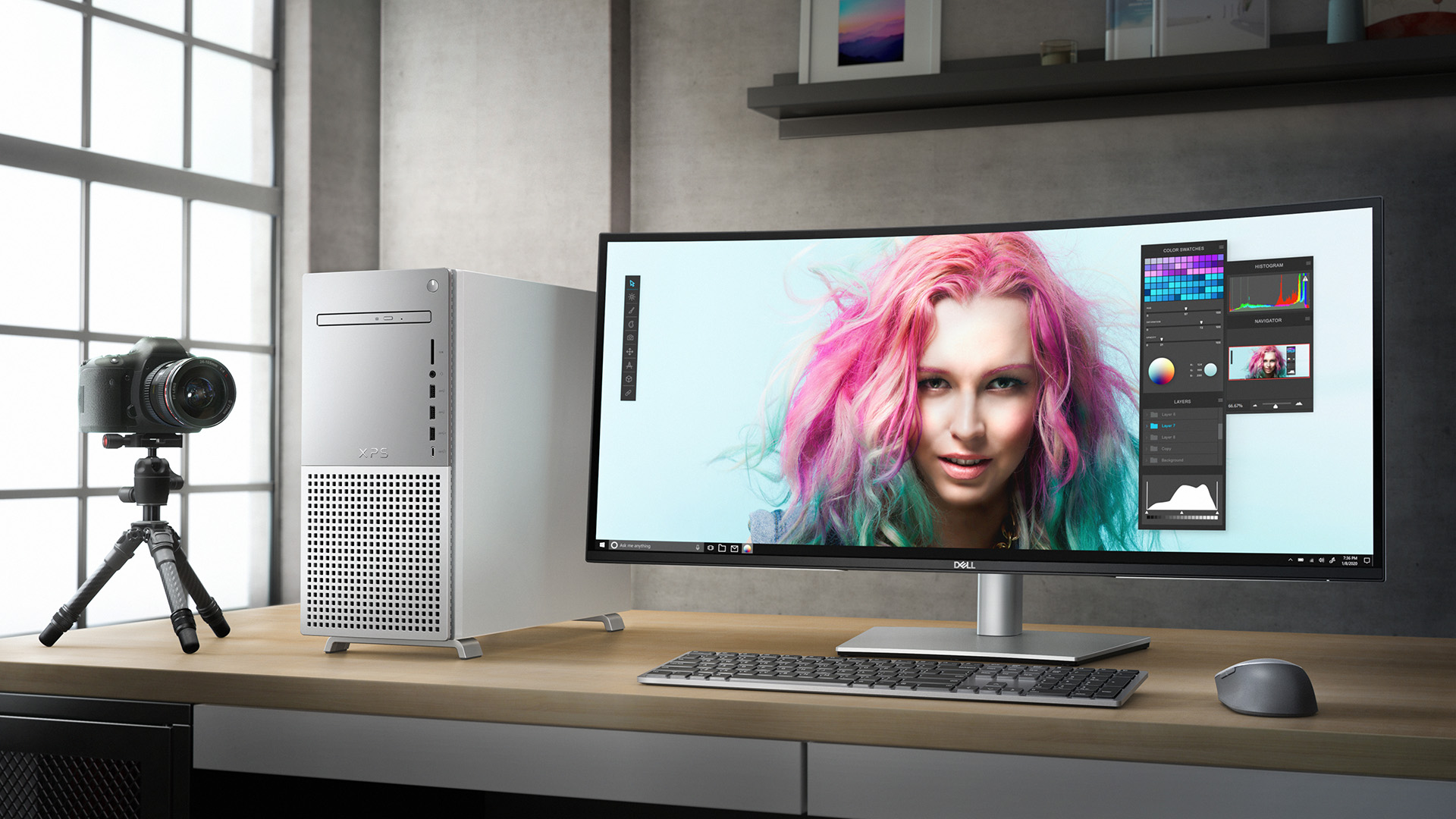
The latest iteration of Dell’s flagship XPS desktop PC has the performance to spare and plenty of room for expansion options.
-
+
Excellent performance for gaming and serious work
-
+
Plenty of USB ports for external expansion
-
+
Space inside for additional hard drives and SSDs.
-
-
Not portable
-
-
No Thunderbolt ports
Why you can trust T3

Laptops may get all the love, but desktop PCs get all the power. That’s definitely the case with the latest iteration of the Dell XPS Desktop, which boasts a powerful processor, lots of memory (and room for a hell of a lot more), and a decent amount of storage space. Unlike some of the best laptops, the XPS desktop has lots of connection options, with an assortment of USB ports and Gigabit Ethernet. It is also a doddle to expand, with room for up to four hard drives, two SSDs, and a 750W power supply that can handle all that and more. All in all, it’s a powerful package with room to expand.
Dell offers a range of desktop models, which correspond roughly to its laptop range. The Inspiron desktops are the workhorses, designed for business and home computing, while the Alienware models are gaming focused. Like the XPS laptops, the XPS desktops are designed for the creative user – either professional or amateur. They are designed to deliver power where it matters and are easily to expand their abilities.
For the test, I paired the XPS desktop with the Dell Ultrasharp 27in 4K monitor. You can discover more about how we put together reviews on the How we test page.
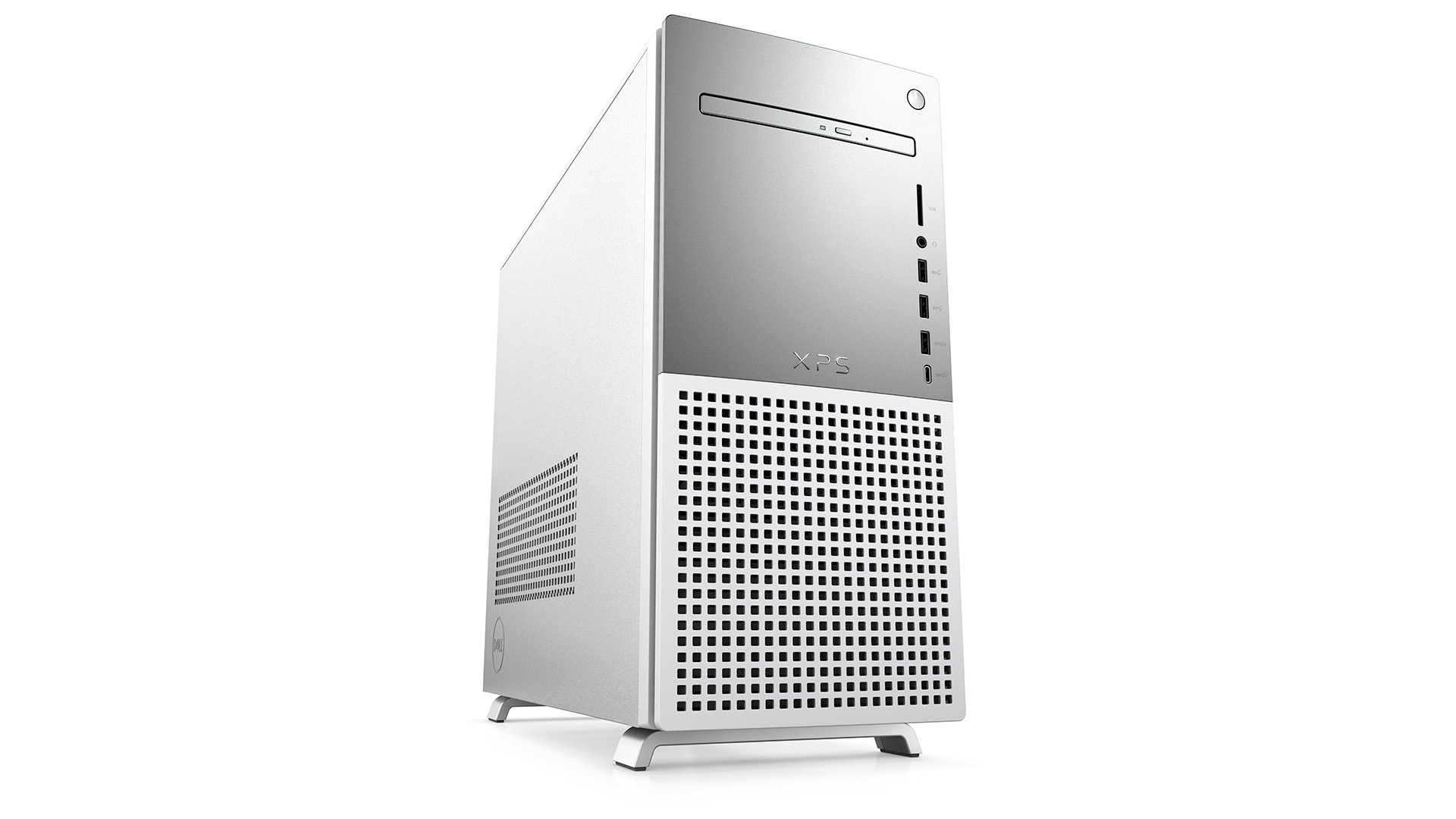
Dell XPS Desktop 8950 review: price and availability
The Dell XPS Desktop 8950 is priced from $930/£1799/AU$2274 for the base level unit. My review unit, with a 12th gen Intel i5-12600K CPU, 16GB of RAM, 512GB SSD & 2TB HD, and the Nvidia RTX 3060Ti GPU is priced at $1891. The i5 version isn’t available in the UK or Australia, so the closest is the i7, which with 16GB RAM and the Nvidia RTX 3060Ti starts from £1649/AU$3599. Make sure you check our Dell discount codes page to see if you can lower the cost.
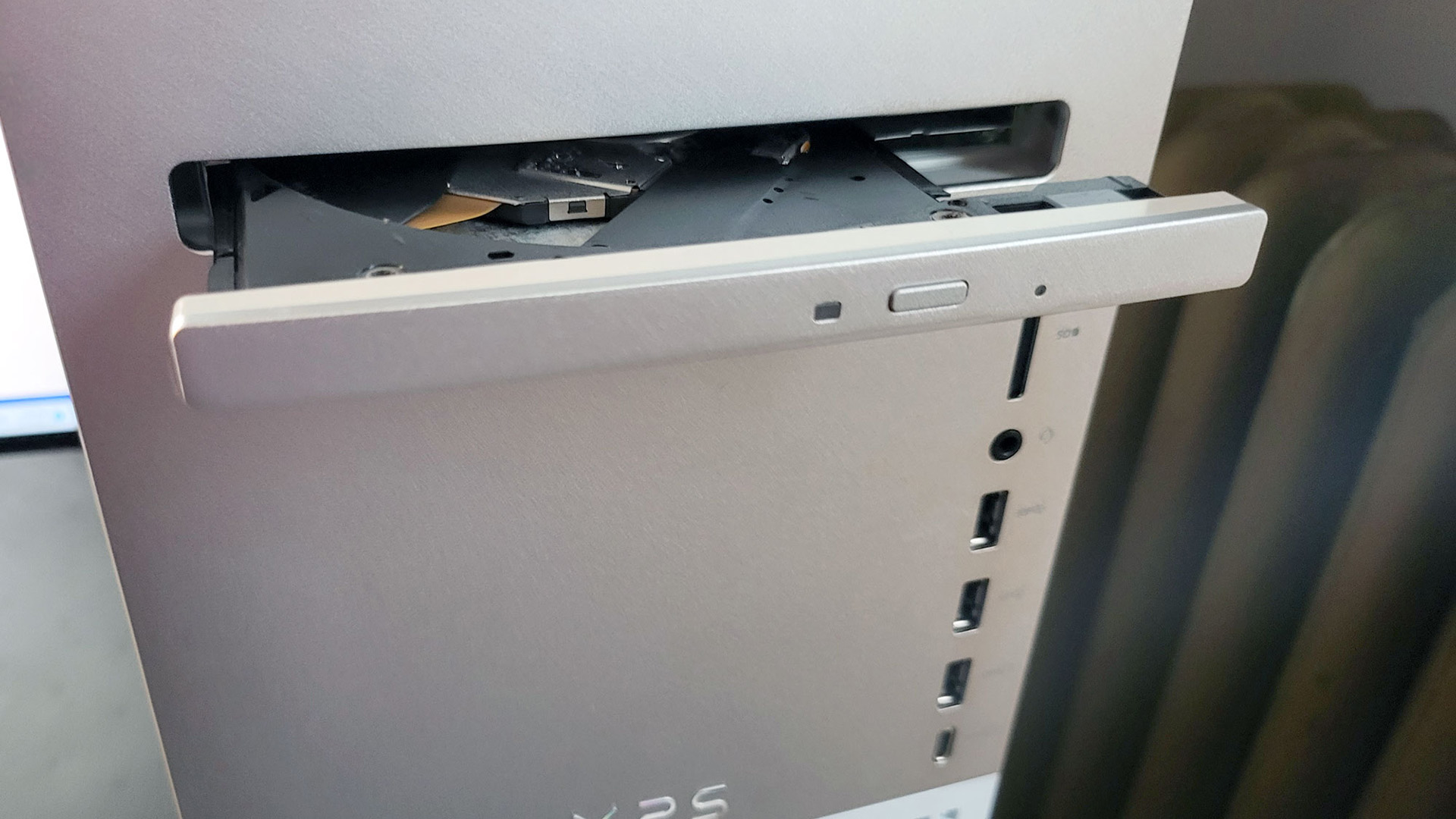
Dell XPS Desktop 8950: design
I tested the 8950 in the platinum silver finish, but it is also available in the more traditional Dell black. The case is attractively designed, with a shiny finish that looks almost sculptural. On the front of the case is a USB-C port, three USB 3.2 ports, a headset socket, and an SD Card slot. There is also a DVD-RW drive that feels almost nostalgic in these days of downloads.
It is pretty standard fare on the back of the case, with four USB 3.2 slots, one USB-C, gigabit ethernet, and the audio outputs for a 5.1 speaker system. On the graphics card are three DisplayPort sockets plus an HDMI 2.0 socket. The power connection and large power switch are at the bottom.
One thing missing here is Thunderbolt ports. These are the fastest way to connect devices that need the fastest speeds, like large external drives or external GPUs. Will most people miss them? Probably not, but with every modern laptop coming with Thunderbolt 4, it is becoming the standard way to connect high-end external devices like docks and fast RAID hard drives, so it is a pity that it isn’t available here as an option.
Get all the latest news, reviews, deals and buying guides on gorgeous tech, home and active products from the T3 experts
Inside the case, there is plenty of room, with connections for up to four hard drives on the motherboard. There are only two 3.5-inch drive bays, but you can get an adapter that allows you to install two 2.5-inch hard drives or SATA SSDs into this one space. Power cables for two drives are already installed. In addition, there is a vacant M.2 SSD slot on the motherboard.
A water cooler provides quiet cooling while the system is cranking. This passes water over the processor, then through a large radiator on the back of the case with a fan attached. The advantage here is that larger fans are quieter, so the fan can still cool the processor without sounding like a hurricane. This is a sealed system too, so you never need to refill it.
Below the water cooler are the three PCI Express card slots, two 4x and one 16x. The latter is occupied by the Nvidia RTX 3060Ti graphics card, which doesn’t block the other two: you can still get a full-sized card into these slots if you want to add more hard drives or faster networking.
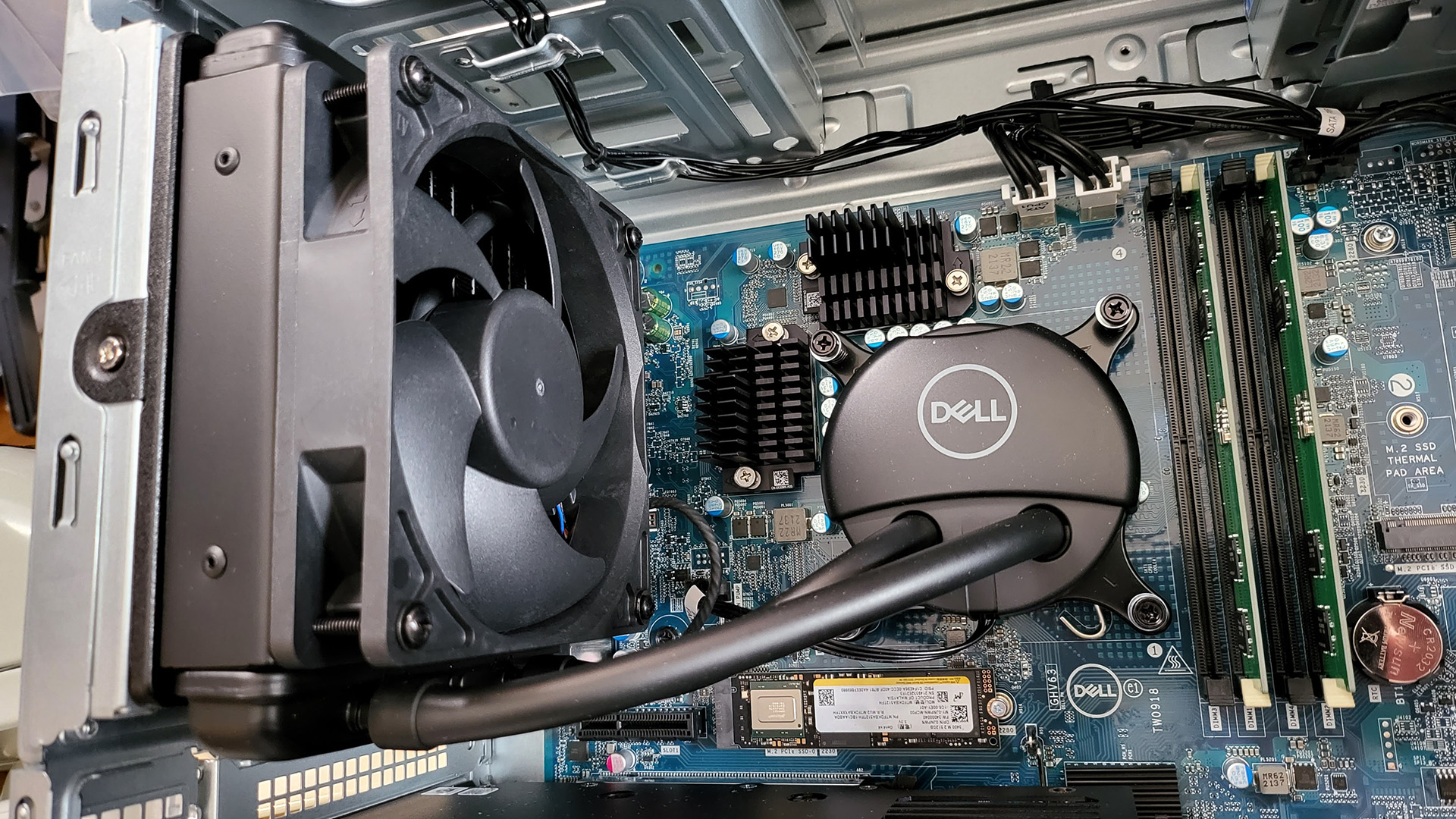
Dell XPS Desktop 8950 review: performance and features
The 12th gen Intel Core i5-12600K processor in my review unit is in the middle of the range for performance, but I found that it is still a powerhouse with oomph to spare. Each of the 10 cores normally runs at 3.7Ghz, but some can increase this speed to 4.9GHz when they are working on something complicated. If you want to go all out for power, an additional $450 will get you the Intel Core i9-12900K, which has sixteen cores and a maximum speed of 5.2GHz. You probably won’t need it, though. I found that the i5 processor in my review unit was more than capable of handling pretty much anything I threw at it.
In the benchmarking programs PC Mark 10 and 3D Mark, the 8950 achieved excellent scores, managing 10776 on the PC Mark 10 office benchmark and 11313 in the 3D Mark Time Spy benchmark. That puts it near the top of any performance chart, meaning it can handle heavy-duty computing tasks. Both scores are comparable with a high-end gaming laptop like the Razer Blade 17 2022, which scored 11826 in 3D Mark. Sure, you can’t carry the XPS 8950 around with you, but it is also less than half the price for nearly the same gaming performance.
This processing power was borne out in my experience running apps like Photoshop, Premiere, and other heavy computing tasks. The XPS 8950 Desktop handles big images and 4K video with equal aplomb. I found that it did struggle with processing 4K video with several filters, but that’s probably down to the 16GB of memory in my review model. It is one of the upsides of a desktop PC that it is easy to add more: the four memory slots mean you can expand that to up to 128GB if you are routinely juggling large 4K video files or massive databases.
I also found the combination of a fast 512GB SSD drive and 2TB hard drive to be a good combination: programs load quickly from the SSD and there is room for big files on the hard drive. Again, expansion is not an issue: there are connections and room inside the case for one more M2 SSD drive and one more 3.5-inch hard drives or two 2.5-inch drives.
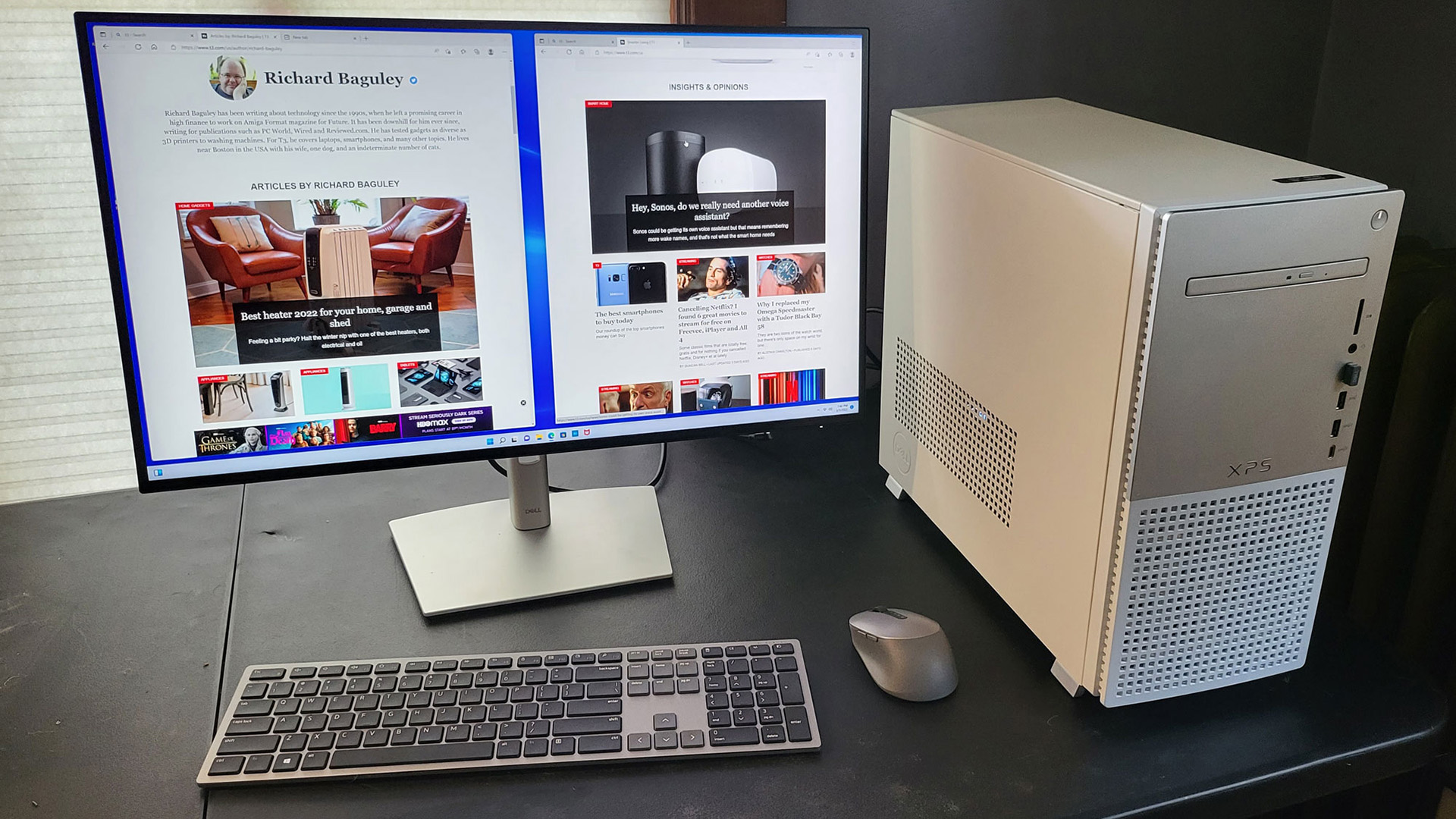
Dell XPS Desktop 8950 review: verdict
Most people only think about laptops when buying a new PC, and that’s a mistake. A desktop PC like the 8950 shows that you get much more bang for your buck by forgoing portability. It is as fast as a $4,000 gaming laptop, but costs less than half as much. So, for the same price, you could buy the XPS 9850, a great gaming monitor, a fancy chair to sit in, and a cheap ultraportable laptop to carry around with you. That’s the sort of value for money that makes me wish more people considered desktop PCs as an option when shopping for a new computer.
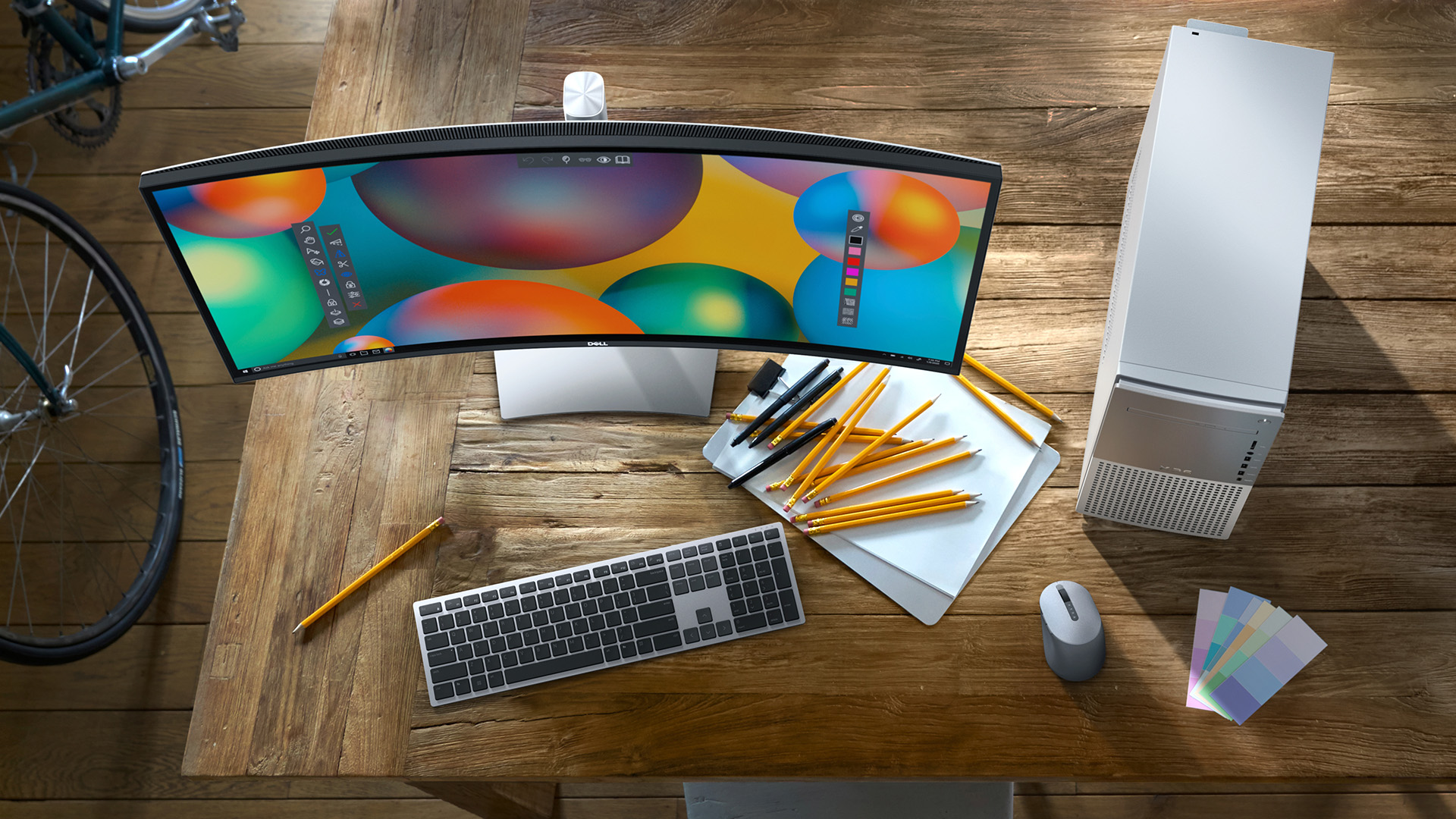
Dell XPS Desktop 8950 review: also consider
Of course, for many reasons a lot of people prefer to have a laptop rather than a desktop. Especially if you use your computer for work and swap between home and the office. You can get a similar level of power from the Dell XPS 15 laptop as you can from the desktop model. And though you may pay a little more for a similar spec level, you do get the advantage of a high quality display built in.
If you still want to use a desktop monitor, you might want to consider the smaller Dell XPS 13. You can plug this in when at your desk to enjoy the larger display, but have a machine that’s even more portable when you’re not.

Richard Baguley has been writing about technology since the 1990s, when he left a promising career in high finance to work on Amiga Format magazine for Future. It has been downhill for him ever since, writing for publications such as PC World, Wired and Reviewed.com. He has tested gadgets as diverse as 3D printers to washing machines. For T3, he covers laptops, smartphones, and many other topics. He lives near Boston in the USA with his wife, one dog, and an indeterminate number of cats.